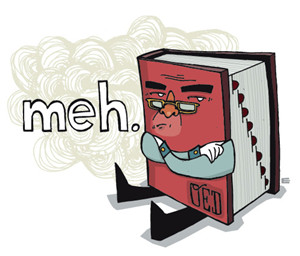
今天的《词汇大师》讨论了身体语言,在不同的国家身体语言有着很大的差异…… 
在美国,把拇指和食指比成圈,其余三个手指立起来表示好的,OK。同样的手势在比利时,法国却表示无价值的,零。而在日本却表示换硬币……
Broadcast on COAST TO COAST: September 25, 2003
AA: I'm Avi Arditti with Rosanne Skirble, and this week on Wordmaster — the language of non-verbal communication. Two writers, Melissa Wagner and Nancy Armstrong, have put together a book of one-hundred-eight gestures and their various, and sometimes multiple, meanings around the world.
RS: "Field Guide to Gestures" is the name of the book, and Melissa Wagner starts with one that Americans would immediately recognize as the sign for "OK."
WAGNER: "Index finger and the thumb come together to make a ring, and then the three other fingers on the hand kind of splay out. And you might put that up and say 'OK' with a big smile, and you're really giving approval."
AA: "We're doing it here in the studio."
WAGNER: "I'm doing it too! In certain areas of the world, the OK symbol that we just discussed might actually mean something else. In Belgium or in France it might mean that you're worthless. Or it might mean zero. Or in Japan it might mean that you want your change in coins if you show the OK symbol, or what Americans know as the OK symbol, at the cash register.
"So around the world these things that Americans take for granted, and I suppose that we all take for granted, as being something that everyone understands, actually are just as difficult to learn as language."
AA: "That's right, you don't want to be perceived as a 'loser.'"
WAGNER: "[laughter] That's right!
AA: "That's a fun little gesture — why don't you describe the gesture to indicate that someone is a loser."
WAGNER: "OK, either hand, both thumb and index finger out, and the other three fingers curled under. You're making kind of an L with your thumb and index finger. Raise that up to your head and put it on your forehead."
RS: "Now what does it mean to be a loser?"
WAGNER: "It means that you maybe have said something that is maybe dumb. It's more of a chiding gesture, where you're showing kind of joking disapproval."
RS: "Tell us some more of the gestures in the book. What were the most obvious gestures that you recorded in your book?"
AA: "And how did you collect your observations?"
WAGNER: "Sure. Nancy and I, neither one of us are anthropologists, so we actually relied on the research of a lot of other folks and kind of compiled it and made it very accessible for anyone to be able to understand. And some of the other gestures that we covered that we were very interested in finding out the origins and meanings of, were things like what's known as 'the finger' here in the United States — which is an insulting gesture that's often used by motorists.
"And by 'the finger?I mean the middle finger on either hand is extended and the other fingers in the hand are kind of curled down. Here in the United States that's also referred to as 'flipping someone the bird.'"
RS: "Well where did it come from?"
WAGNER: "It actually has been around for thousands of years. It's referred to in classic, ancient Roman texts. In Latin it's known as 'digitus impudicus' — indecent digit [laughter] which makes it sound quite noble."
AA: "Yes, I'll have to remember that! [laughter]"
WAGNER: "Right! There are certainly things that we don't really think of as being gestures that are also in the book. Like the handshake, for instance, which is a very typical greeting. And, you know, the most acceptable greeting here in the United States is a nice, firm handshake. We found out that that actually was brought over into this country from England. It kind of came about around the sixteenth century as a way to show the binding of a contract."
RS: "After doing all this work, do you have a favorite gesture?"
WAGNER: "I really enjoyed learning about the horns gesture — this one's kind of hard to explain."
RS: "Where you take two fingers and, like, make horns on your head?"
WAGNER: "No — your index and pinky fingers are held straight — "
RS: "Oh, OK."
WAGNER: " — and then your thumb comes down and holds the two middle fingers down."
AA: "And that's the 'hook 'em horns,' isn't it? That's the Texas ... "
RS: "That's right! It's the 'hook 'em horns,' so the Texas Longhorns — "
AA: "Which is a ... "
RS: "Football team."
WAGNER: "A football team, college — "
AA: "A college football team."
WAGNER: " — here in the United States. Also it was adopted by hard rockers."
AA: "That's right!"
WAGNER: "Rock-and-rollers would make this gesture at concerts or just kind of to show an affinity with each other. But the funny thing I found out is that in other parts of the world, it can actually mean your wife is cheating on you."
RS: And, yes, there are more explicit gestures included in "Field Guide to Gestures," co-authored by Melissa Wagner. It's from Quirk Books complete with pictures and detailed instructions.
AA If this were television, it'd be tempting to close with the "call me" sign — thumb up, pinkie out, other fingers down, as if you're holding a telephone up to your ear. But Melissa says it's been used to the point of becoming a little obnoxious.
RS: So we'll just point you to our Web site, voanews.com/wordmaster, and tell you our e-mail address, word@voanews.com. With Avi Arditti, I'm Rosanne Skirble.











